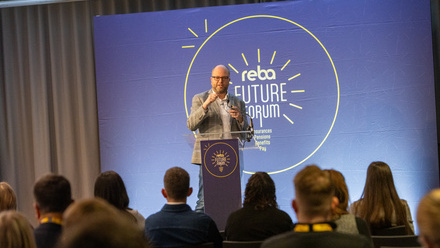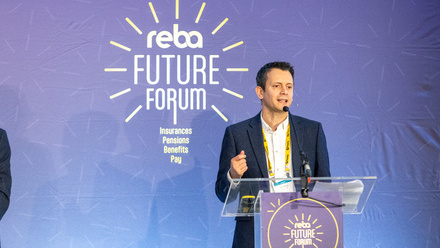The importance of inclusion in boosting employee engagement

It is true that forging an engaged workforce can pay significant dividends, boosting productivity and curbing feeling of dissatisfaction, but implementing change can be a challenge.
It may be a case of fine-tuning, or even going back to the drawing board, but reward professionals have it within their power to make the necessary revisions to their engagement strategy to see positive results.
One place that reward professionals can start is with their benefits provision as engagement with benefits has proven to filter down to other areas of the business.
According to our Global Benefits Attitudes Survey (GBAS), employees whose benefits package meets their needs are more than twice as likely to be highly engaged with their job than those whose benefits package does not meet their needs (49% vs 21%).
Indeed, benefits appreciation can also play an important role in both recruitment and retention.
The majority (89%) of UK workers claim benefit provision is important in their decision to work for a company, according to our Health and Benefits Barometer.
GBAS research also revealed that workers whose company offer more generous benefits packages are twice as likely to stay with their organisation until retirement, than those who work for less generous companies (52% vs 26%).
With so much influencing potential, it would be remiss of companies not to consider how they can improve engagement with benefits strategy. And this is where workforce ‘inclusion’ has an important role to play.
What employees want
A high level of engagement will only exist if benefits are seen as truly valuable and relevant to the workforce.
According our Employee Health, Wellbeing and Benefits Barometer 2019, less than half (48%) of British employees are satisfied with their benefits package.
Despite the importance placed on benefits by workers, two thirds (67%) of workers surveyed said their employer had never consulted them on their rewards and benefits preferences.
Effective employee benefit strategies call for meaningful insights and perspectives from the individuals they are designed to help and support.
Employee feedback is the litmus test for benefits programmes. It is only through seeking feedback that disparities in need or preference can be identified and companies can legitimately claim to be inclusive in their benefits offering.
For example, the Barometer research revealed that low earners were less satisfied with their benefits package (40%) than their higher earning colleagues (60%).
A disparity between low and high earners may be expected, as provision increases with salary, but companies should ask if they are adequately catering for their lower paid workers, as they form the backbone of any operation.
This need not be a costly venture. By reviewing feedback and benefits data, companies may identify that some benefits are more valued than others, so it is a case of adapting the offering and shifting focus to suit need.
The modern workplace is diverse, from the widening generational gap to the growing neuro-diverse demographic, so reflecting differing need in benefits packages is becoming ever more important.
Companies should look to consult with workers, so they can create a benefits package that truly reflects their needs and goals, and to ensure they aren’t neglecting or alienating certain demographics.
The generational question
Choice and flexibility are the route to supporting a wide range of needs, and there is evidence that a comprehensive offering increases benefits appreciation.
According to our Benefits Trends survey, 66% of employees who are offered choice in their benefits say their benefits package meets their needs, compared to 30% who aren’t given a choice.
But this does not come without its challenges. Companies said the biggest barriers to introducing greater choice was that it was too costly (70%) and too complex (60%).
But inaction is not an option, if companies are to see a hike in engagement. Small steps can approximate the desired effect. Take the multi-generational workforce.
In many cases, the professional and personal commitments of older employees will differ notably from those of their younger cohorts. But this does not mean that the preferences differ hugely.
From Gen Z to baby boomers, all of the generations chose traditional insurance benefits, health insurance, income protection insurance, critical illness cover and life insurance, as top choices when it came to most valued benefits, according to the Barometer research.
Non-traditional, wellbeing-related benefits, such as health screenings and counselling, were more popular among younger workers, but there was also an appetite for these types of benefits among older workers.
Each employee population is unique but there may be more that binds different demographics than divides them. By listening to the views of workers and honing in on what really matters, companies can retire the benefits that are redundant and offer flexibility where it really matters.
Warding off subset isolation
Another question companies must ask themselves is if and where interim workers fit into the equation. And this feeds into the debate on whether benefits should differ dependent on worker type.
With transient staff becoming a more common occurrence in the workplace, this will become more of a prevalent issue for employers.
When considering this, employers should take a number of factors into account, the first of which is productivity.
It cannot be denied that contracted workers are an important cog in the corporate machine, and are not immune to work-related issues, such as finances and health. They will be equally affected as a permanent worker.
There is also the question of moral obligation. The Barometer survey revealed that three quarters of workers believe their employers have a moral obligation to offer the same healthcare provision to all staff.
For the sake of employee engagement and upholding reputation, companies may look for the opportunity to establish a baseline of benefits for these types of workers.
Another consideration is administration. The more inclusive the benefits programme, the more streamlined the administration process can be.
Companies must weigh up the benefit of a sliding scale benefits system and the costs associated with governance.
Cultivating neuro-inclusive environments
Another modern challenge is creating a neuro-inclusive environment.
More companies are expanding their talent pool, as the contribution neuro-diverse workers make to the workforce has become better understood and appreciated.
Companies should take steps to make neuro-diverse employees feel valued, included members of the workforce, who play an integral role in the success of the business.
According to the Barometer 2019 research, one in three (32%) UK workers say their employer fails to offer additional help or support for employees who have neurodevelopmental disorders, despite more than one in ten (15%) of respondents saying either they or someone they work with are neuro-diverse.
Training HR teams and line managers on the challenges associated with different neurodevelopment disorders, and the workplace adjustments that can be made to accommodate them, would be advantageous.
Education and training can be provided to promote sensitivity among the wider workforce and challenge any unconscious biases that can limit access to opportunities for people who experience such conditions.
This inclusive approach will help curb feelings of isolation and disengagement among a cohort already at risk of being disadvantaged.
Making a commitment
Benefits provision helps to support the business strategy and companies should treat it so – with clear objectives, careful planning and an adaptable nature.
Companies already committed to a strategy should get the best out of their current projects but look for opportunities to improve outcomes and redirect resources into more valued benefits, where possible.
For companies that do have the opportunity to review and reinvigorate their benefits strategy, stripping it back to basics and taking a bottom up approach will help bring about a feeling of inclusiveness and boost engagement levels, as the benefits will address employee-identified issues or need.
Valuable benefits make for valued employees, so this is an ideal place to start for companies striving to solve the engagement equation.
This article is provided by Willis Towers Watson.
Willis Towers Watson is sponsoring REBA’s Innovation Day 2019. Join us on 28 November in central London to future-proof your reward and benefits strategy.
Supplied by REBA Associate Member, WTW
WTW is a leading global advisory, broking and solutions company.







